Covid-19 – what you need to know
About Covid-19
Covid-19 caused a global health emergency and wreaked havoc across the world. It locked down entire countries and pushed healthcare services to the limits.
It is one more disease in a long list of zoonotic diseases – SARS, MERS, bird flu, Ebola and HIV/AIDS to name a few – which come from the exploitation and consumption of animals.
Three in four of the world’s new or emerging infectious diseases come from animals, mainly from trading in wildlife and from factory farming. Known collectively as zoonotic diseases, they cause the deaths of around three million people a year.
To reduce the risk of another global pandemic, the obvious solution, the simplest, most economical and effective solution, is to stop eating animals.Here, we answer the most frequently asked questions about Covid-19 and explain why we must stop eating animals to prevent future pandemics.
Covid-19 FAQs
What are viruses?
A virus is an infectious agent that can only replicate within a host organism, using the host’s cells to produce copies of itself. They can infect bacteria, plants (although not coronaviruses) and animals – including humans.
Viruses are so small that their existence wasn’t realised until the 1890’s and were first seen only in 1939 following the introduction of the electron microscope. Their genetic material (viral genome) is contained within a protein shell called a capsid and can vary greatly – it can be DNA or RNA, single or double-stranded, linear or circular and vary in length. In some viruses, the protein shell is enclosed in a membrane called an envelope.
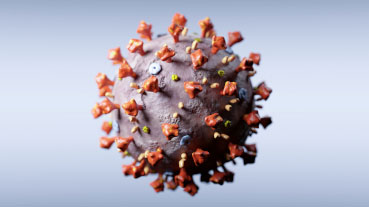
Why do viruses infect us?
They do it to replicate as that is the only way they can make copies of themselves – rather like a photocopier!
A virus infects its host by attaching to a host cell and penetrating the cell wall or membrane. The virus’s genome is uncoated from its protein shell and inserted into the host cell where it hijacks the cell’s machinery forcing it to replicate the viral genome and so producing parts for new viruses which are then assembled. These new viruses then burst out of the host cell in a process called lysis, which kills the host cell. The new viruses may then go on to infect new cells and new hosts.
Many diseases are caused by viruses, such as influenza, chicken pox, German measles, HIV/AIDS, Ebola, the common cold and rabies. The best defence against viral infections is vaccination with inactive viral particles which act as antigens and alert the body’s immune system in much the same way as an active virus would. The body’s immune system responds by producing antibodies that fight the invader thus increasing immunity to the disease. In other words, the vaccine acts as a primer, prompting your immune system to get ready to defend against an attack.
What are the differences between viruses and bacteria?
Bacteria are much larger than viruses. They were first discovered in 1676 and can be seen under a normal microscope. They are single-celled organisms that can thrive in a range of environments including in soil and water and on plant and animal cells.
Bacteria were among the first life forms to appear on Earth and are present in almost all the life forms that subsequently developed – most couldn’t live without bacteria. The relationship can be symbiotic (to the benefit of both the bacteria and host) or parasitic (the bacteria live off the host). A good example of a symbiotic relationship in humans is the ‘good’ bacteria in our guts which extract energy from food, produce vitamins and amino acids and form barriers against infective invaders. They stimulate your immune system, break down toxins and boost your overall health. So not all bugs are bad! There are typically 40 million bacterial cells in a gram of soil and a million in a millilitre of fresh water.
Before the Second World War, the main causes of death across the world were bacterial infectious diseases such as TB, pneumonia and cholera. With the widespread introduction of antibiotics after the war, these and other infectious diseases could be successfully treated but antibiotics are ineffective against viruses. In developed countries, the main cause of death became degenerative diseases caused by poor diet and lifestyle – heart disease, obesity, diabetes, strokes etc and in developing countries, as incomes rise, these diseases are increasing. The overprescribing of antibiotics and particularly their use in farmed animals, which accounts for 70 per cent of all antibiotics worldwide, has seen their effectiveness diminish and some bacterial infectious diseases are becoming hard to treat.
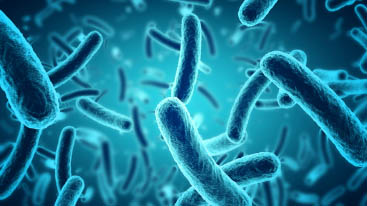
What are coronaviruses?
Coronaviruses are a large family of viruses which can cause illness in animals and humans. In humans, several coronaviruses are known to cause respiratory infections, ranging from the common cold to more severe diseases such as severe acute respiratory syndrome (SARS), Middle East respiratory syndrome (MERS) and Covid-19, caused by a new coronavirus (SARS-CoV-2) that emerged in China in 2019.
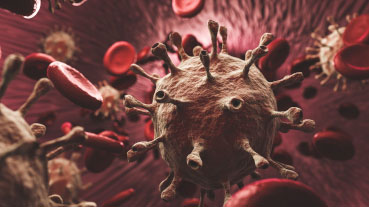
Where did SARS and MERS come from?
The deadly SARS coronavirus outbreak in 2003 was traced directly to a colony of horseshoe bats but it was farmed wildlife – civets in this case – that were sold for food and Chinese medicine (they are believed to improve male virility, among other health attributes), that acted as the vector passing the virus to humans. Bats are also thought to be the natural host of the virus that causes MERS but it is believed to have spread to humans via camels, although the camel showed no symptoms. The terrifying Ebola disease has been traced to eating primates (as bushmeat) who had also been infected by bats.
Many of the most virulent diseases that infect humans are transmitted to us from animals. In fact, a whopping 75 per cent of new or emerging infectious diseases in people come from animals. It’s thought that the introduction of farming led to the ‘spillover’ of many infectious diseases that now affect us – whooping cough originally came from pigs, typhoid fever from chickens, influenza from ducks, leprosy from water buffalo and the common cold from horses.
Placing humans in ever closer contact with animals has enabled some animal diseases to mutate and infect us. As we cram more and more animals together in increasingly filthy and stressful conditions, such as in factory farms or wet markets, we are playing a dangerous game of pandemic Russian roulette.
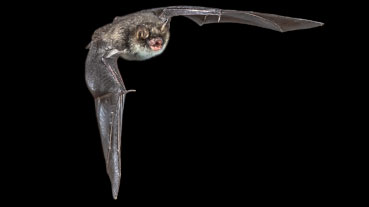
Where did the new coronavirus that causes Covid-19 come from?
Again, wild animals and wet markets are thought to be involved. Research shows that the SARS-CoV-2 coronavirus is very similar to a bat coronavirus, indicating bats as the natural host. It’s thought that the virus in bats jumped to another animal, possibly a racoon dog or pangolin (the world’s most trafficked animal) and then infected humans. In other words, it arose from the mixing of animals, possibly brought together at the Huanan Seafood Wholesale Market in Wuhan, China. Here, wild animals, including birds, bats, pangolins, rabbits, racoon dogs, marmots and snakes were traded.
However, it’s possible the virus emerged a little earlier but again scientists suggest that the likely cause is trading in wild animals. Georgetown University infectious disease specialist Daniel Lucey states that the animal-to-person transmission of the virus could have occurred “in one or more multiple markets, or restaurants, or farms, or with wild animals, legal or illegal trade.”
Coronaviruses are known to jump from animals to humans, so it’s thought that many of the first people infected with the disease (mainly stallholders from the seafood market) may have contracted it from contact with animals. It then spread from human to human.
The important point is that exploiting and eating animals threatens everything, including us!

Has the trade in wild animals been banned in China?
In February 2020, the Chinese government initiated a permanent ban on all trade and eating of wild terrestrial animals – whether captive-bred or wild-caught. Many scientists welcomed the new law, which was finalised in December 2022. It “clearly prohibits the consumption, hunting, trade and transport of terrestrial animals that grow and breed naturally in the wild,” said Jiahai Lu, an epidemiologist at Sun Yat-Sen University, Guangzhou.
However, the ban does not include aquatic species, nor does it affect using wildlife for fur, zoos, the pet trade, traditional Chinese medicine, conventional medicine or research. This creates a potential loophole for traffickers who may exploit the non-food exemptions to sell or trade live wildlife.

How many coronaviruses infect humans?
SARS-CoV-2 (that causes Covid-19) is the seventh coronavirus known to infect humans. SARS-CoV, MERS-CoV and SARS-CoV-2 can cause severe disease, whereas the other coronaviruses HKU1, NL63, OC43 and 229E are associated with mild cold symptoms.
How many people have been infected and killed by SARS, MERS and Covid-19?
SARS: Emerged 2002. There have been two SARS outbreaks, which resulted in a highly contagious and potentially life-threatening form of pneumonia. Both happened between 2002 and 2004. During the period of infection, there were 8,098 reported cases of SARS and 774 deaths. Death rate: 10%
MERS: Emerged 2012. From April 2012 to October 2022, a total of 2,600 laboratory-confirmed cases of MERS were reported globally, with 935 deaths. The majority of cases were reported from Saudi Arabia, with 2,193 cases and 854 related deaths. Death rate: 34%
Covid-19: Emerged 2019. Over 700 million cases of Covid-19 have been reported globally (very many cases are not tested for or reported in some countries, so the true figure may be much higher). Global deaths have now exceeded seven million. Death rate: between 0.7 and 3.4%. Estimated at 3.2% by the World Health Organisation in March 2020. Countries with more elderly populations or with fewer people vaccinated will have higher rates.
The number of Covid deaths in some Africa countries was considerably lower than expected at the beginning of the pandemic. Although the reasons why are unclear, and more research is needed, it may be partly due to a relatively younger population with less underlying health conditions such as obesity and heart disease.
What is the full name of the coronavirus that causes Covid-19?
The virus is called SARS-CoV-2 (severe acute respiratory syndrome coronavirus 2) and the disease it causes is called Covid-19, a shorter version of ‘coronavirus disease 2019’.
Why are coronaviruses so deadly?
Most viruses have existed for thousands of years in wild animals without harming them, killing their own host is not a useful strategy for the virus’s survival! Viruses naturally mutate and these mutations may enable them to find different hosts. Their high mutation rates, coupled with short generation times and large population sizes, allow viruses to rapidly evolve and adapt to new environments.
This is what happened with Covid-19 – the virus had not infected humans before so we had little or no residual resistance to a new virus that had the ability to spread easily between people.
On the other hand, SARS and MERS are not as contagious as Covid-19 but are much more deadly, killing around 10 and 34 per cent respectively. Even more concerning is the H5N1 avian influenza virus which the World Health Organisation says kills over 50 per cent of those infected. Thankfully it does not spread between humans easily – yet. It is a matter of time before a pandemic breaks out where the worst happens and a new virus becomes both fiercely contagious and very deadly.
What are the symptoms of Covid19?
The main symptoms of coronavirus initially included a high temperature, a new, continuous cough plus a loss or change to your sense of smell or taste. Over time, the symptoms of the most dominant variants have changed.
The top five symptoms of the Omicron variant (according to the ZOE COVID study) are:
- runny nose
- headache
- fatigue (mild or severe)
- sneezing
- sore throat
Some people may have aches and pains, nasal congestion, runny nose, sore throat or diarrhoea, although these are mild and begin gradually. Some people become infected but don’t develop any symptoms and don’t feel unwell and most recover from the disease without needing special treatment.
Older people and those with underlying medical problems such as obesity, high blood pressure, heart problems or diabetes, are more likely to develop serious illness. People with fever, cough and difficulty breathing should seek medical attention.
What is long Covid?
While Covid-19 can cause a period of acute illness, some people continue to experience symptoms, such as breathlessness, muscle aches and fatigue, for weeks, months or even years – a condition called long Covid.
Chest pains, shortness of breath and fatigue are among the commonly described symptoms along with ‘brain fog’ and a loss of smell and taste. Some people experience lasting damage to their heart and lungs and blood clots that can cause painful swelling or strokes. Estimates suggest that there could already be millions of people around the world living with long Covid.
How likely am I to suffer complications if I get Covid-19?
Although a small number of people end up in hospital, the vast majority of people who get Covid-19 are either asymptomatic or suffer a mild illness, are not hospitalised and do not require oxygen. Of those who do go to hospital, some develop complications. Although older people are most likely to be affected, complications have been seen in younger, previously healthy adults. A large-scale study published in The Lancet has found that one in two people hospitalised with Covid-19 earlier in the pandemic, before vaccines were available, developed at least one health complication. A more recent small-scale study in Uganda found that around one in five people who had recovered from severe Covid-19 showed ECG abnormalities indicating long Covid.
Dr William van’t Hoff, Chief Executive of the NIHR Clinical Research Network said: “The work, performed in the first phase of the pandemic, underlines how serious Covid-19 is and reinforces the importance not only of the treatments now available, but critically, the role of vaccination in reducing infection and lessening its impact.”
How does Covid-19 spread?
You can catch Covid-19 from others who have the virus. The disease can spread from person to person in close contact with each other through small droplets from the nose or mouth which are spread when an infected person coughs, sneezes, talks, sings or just breathes out. Another person may then get the virus by inhaling it or after touching their eyes, nose or mouth after touching surfaces or objects that have been contaminated by it. This is why it is important to stay more than two metres (over six feet) away from anyone during a period of self-isolation and wash your hands regularly.
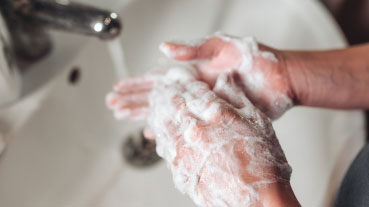
Can Covid-19 be caught from a person with no symptoms?
Whether or not they have symptoms, infected people can be contagious and the virus can spread from them to other people. Research suggests that infected people appear to be most infectious just before they develop symptoms (namely two days before symptoms appear) and early in their illness. People who develop severe disease may be infectious for longer.
Can Covid-19 be caught from faeces?
The risk of catching the disease from the faeces of an infected person appears to be low but theoretically possible. While the virus is certainly present in faeces in some cases, this is not the main route of transmission but the faecal-oral route is thought to exist and cause gastrointestinal symptoms. It is another reason to thoroughly wash your hands before meals and after going to the toilet.
Should I wear a mask to protect myself?
Yes, but more to protect others. Wearing masks almost entirely prevents tiny droplets from the mouth spreading the virus to others. Masks offer less protection from catching the virus.
During the pandemic, masks helped slow the spread of infection particularly when worn by people who did not know they were infected. When we speak, micro-droplets are emitted from our mouths and masks – including homemade ones – stop most of the droplets.
So, masks are about protecting the community. Prof David Heymann CBE, a World Health Organisation adviser, said “I think that wearing a mask is equally effective or more effective than distancing.”
Other effective ways to help protect yourself and others against Covid-19 are to frequently wash your hands with plenty of soap and water for 20 seconds, cover your cough with the bend of an elbow or tissue and maintain a distance of at least two metres (six feet) from people who are coughing or sneezing.
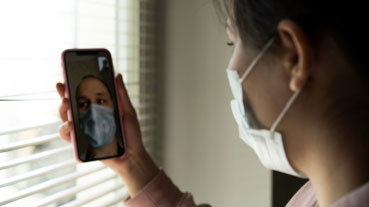
How long is the incubation period for Covid-19?
On average it takes five to six days from when someone is infected with the virus for symptoms to show, however it can take up to 14 days. These estimates may vary with new variants.
Can I catch Covid-19 from my pet or other animals?
Many species of mammal are thought to be susceptible to SARS-CoV-2. So far, the ones we know include cats, dogs, ferrets, lions, tigers, gorillas and farmed mink.
In September 2021, more than a dozen gorillas tested positive for Covid-19 at a zoo in Atlanta, Georgia in the US, probably after contracting the virus from a keeper, it is thought. In 2022, hundreds of white-tailed deer in North America tested positive for SARS-CoV-2. It’s not yet clear whether deer-to-human transmission could spark outbreaks but scientists are growing increasingly concerned about animals becoming viral reservoirs potentially breeding new variants.Mink being farmed for fur, for example, have both caught the virus from people and transmitted it back to them.
Mink fur farms have provided the perfect environment for the virus to mutate and spread back to humans raising concerns that the mutated version (or variant) might be even more deadly or may hamper the development of a vaccine. This shows the real danger of what virologists call ‘reverse spillover’ and demonstrates the danger factory farms pose.
How long does the virus survive on surfaces?
There is some uncertainty about how long SARS-CoV-2 can survive on different surfaces but it seems to behave like other coronaviruses. Studies on these have shown that the virus may persist on surfaces for a few hours or up to several days. This may vary according to the conditions, type of surface, temperature and humidity.
The virus may live longer on harder surfaces such as plastic, glass and steel and shorter on softer surfaces such as fabrics, paper and cardboard. Wiping down hard surfaces with simple disinfectant is capable of destroying the virus. And remember to wash your hands often.
Is it safe to receive packages in, or from, areas with Covid-19?
The likelihood of an infected person contaminating commercial goods is low and the risk of catching the virus from a package that has been moved, travelled and exposed to different conditions and temperatures is also low. It isn’t just about the virus being present but about the ‘viral load’ – it has to be present in sufficient quantity and with its structure intact, to transmit infection. It would be good practice to wash your hands after taking delivery of a package if you are concerned.
Sunbathing/hot and cold temperatures/hot baths
Sunbathing and temperatures over 25°C offer no protection – you can catch Covid-19 no matter how sunny or hot the weather is and countries that have hot weather have reported cases of the virus. Similarly, claims that hot and humid weather can cause its transmission are also untrue and taking hot baths offers no protection. Similarly, there is also no reason to believe that cold weather can kill the virus. The normal human body temperature remains around 36.5°C to 37°C, regardless of the external temperature or weather.
Does drinking alcohol offer protection?
No, and frequent or excessive alcohol consumption can increase your risk of many other health problems.
Can Covid-19 be transmitted through mosquito bites?
There is no evidence to suggest that the virus can be transmitted by mosquitoes. It is a respiratory virus that spreads primarily through droplets generated when an infected person coughs or sneezes, or through droplets of saliva or discharge from the nose.
Are hand dryers effective in killing the new coronavirus?
No. Hand-dryers are not effective but they are very efficient at blowing other possible infections around the room. It is best to dry your hands with disposable paper towels.
Can an ultraviolet disinfection lamp kill Covid-19?
UV lamps should not be used to sterilise hands or other areas of skin as UV radiation can cause skin irritation.
Can spraying alcohol or chlorine on your body kill Covid-19?
No. Spraying alcohol or chlorine all over your body will not kill viruses that have already entered your body. Spraying such substances can be harmful to clothes or mucous membranes such as eyes, nose and mouth. Both alcohol and chlorine can be useful to disinfect surfaces but they need to be used according to the recommendations.
That said, if soap and water are not available for hand washing, an alcohol-based hand sanitiser that contains at least 60 per cent alcohol is recommended to help you avoid getting sick or spreading the virus to others.
What are the facts about vaccines?
See Viva!’s vaccine fact sheet: viva.org.uk/materials/vaccines-factsheet
Do young adults need the vaccine?
Covid-19 vaccines can protect you from getting and spreading the virus. If you do get Covid-19, the vaccine may help prevent you from becoming seriously ill and needing hospitalisation and oxygen support. Although older people are more likely to be seriously ill, some younger people have been very ill too and many have been affected by long Covid.
However, it’s important to remember that it’s not only about you. When large numbers of a population are immunised, it reduces the risk of exposure for everyone in the community including vulnerable people who are ill or have a weakened immune system. This is called ‘herd immunity’ and requires most people to opt in for it to be effective. By getting vaccinated you are protecting people around you, particularly vulnerable people at increased risk for severe illness from Covid-19. Therefore, you will be protecting others by getting the vaccine.
Although they may not always prevent you from catching Covid-19, they appear to be highly effective at preventing hospitalisation and death from it and lowering the risk of you spreading it. Opting out of vaccination programmes increases the risk of outbreaks. So, while some see vaccination as a personal choice, there is a social responsibility too – protecting yourself and your community.
Which underlying diseases make coronavirus more dangerous – and can they be prevented?
Certain people are at a higher risk from Covid-19 if they have underlying health conditions. Covid-19 is more dangerous for older people simply because as we age, our immune system gradually weakens. There isn’t much we can do about aging but ensuring good nutrition is important for our immune system to be at its best.
Heart disease and diabetes are two main underlying conditions that increase the risk of severe Covid-19. Both can be prevented and even reversed through diet. Heart disease, high blood pressure and cholesterol respond really well to wholesome vegan diets, so much so that in some trials, they were more effective than medication. Type 2 diabetes has also been studied extensively and a low-fat vegan diet based on wholefoods has achieved great success in several studies.
Asthma patients are seen as vulnerable to Covid-19 complications because the infection affects the airways and can trigger serious asthma attacks. The condition also increases the likelihood of pneumonia and acute respiratory stress. Asthma cannot be cured but research shows that a diet high in antioxidants from fruit and vegetables can help reduce airway inflammation.
Cancer is another disease that puts people at high risk of Covid-19 complications. It not only compromises the immune system and causes a host of health issues but patients may also struggle to access their much-needed treatment and medications at this time. We cannot cure cancer with diet but a healthy lifestyle can help prevent it or support the treatment.
Chronic kidney disease has been linked to an increased risk of coronavirus infection progressing to the life-threatening pneumonia stage. Wholesome vegan diets have a kidney-protective effect, while animal-based ones can cause harm and kidney patients are actively advised against eating meat.
Several other factors, such as smoking and excessive alcohol consumption, and conditions, such as liver disease, HIV/AIDS and severe obesity also increase the risk of life-threatening complications. While we cannot entirely protect ourselves from infection, there’s always room for improvement when it comes to our lifestyle habits!
Find out how to Slash your risk of severe Covid-19.
Does a vegan diet have any impact on coronavirus?
Several studies now show that not only does a healthy plant-based diet lower the risk of suffering severe Covid-19, but it may also lower your risk of catching the disease.
One study, published in the BMJ Nutrition, Prevention & Health journal, confirmed what Viva! were saying for months – a vegan diet may slash your risk of severe Covid-19. The study included people from France, Germany, Italy, Spain, UK and the USA who were infected with Covid-19. Their diet and symptoms were recorded and analysed to reveal that those who followed a plant-based diet were much less likely to experience severe Covid symptoms.
The ZOE COVID Symptom Study, the largest study to date looking at diet and Covid, found that those on a plant-based diet are 10 per cent less likely to get Covid, and if they do, they are 40 per cent less likely to require hospitalisation and oxygen support.
The advantage of being vegan may come from the lower rates of underlying conditions that have been shown to increase the risk of coronavirus infection turning deadly – heart disease, type 2 diabetes, kidney disease, obesity, cancer and chronic lung disease. Vegan diets also lead to beneficial gut bacteria that produce health-supportive substances and may help strengthen the immune system. A healthy vegan diet is also packed with vitamins, minerals and disease-busting antioxidants.
See what you should eat each day for good health.
Who is affected by Covid-19?
People of all ages can be infected but older people and those with pre-existing medical conditions, such as obesity, high blood pressure, asthma, diabetes and heart disease, appear to be more vulnerable than others. Men have a higher risk than women.
It has been widely reported that children are much less likely to get severely ill and die from Covid-19. This may be because children’s immune systems are still developing, so they are shielded from a dangerous immune response – called a cytokine storm – where the immune response against the coronavirus becomes overzealous and causes life-threatening damage to the lungs.
What is the fatality rate for covid?
The so-called death rate is the number of deaths divided by the number of cases. So, the probability of dying if infected by the virus. This probability differs depending on the age group.
The percentages shown below do not have to add up to 100 per cent, as they do NOT represent share of deaths by age group. Rather, it represents, for a person in a given age group, the risk of dying if infected with Covid-19.
Covid-19 fatality rate by age:
| AGE | DEATH RATE confirmed cases | DEATH RATE all cases |
| 80+ years old | 21.9% | 14.8% |
| 70-79 years old | 8.0% | |
| 60-69 years old | 3.6% | |
| 50-59 years old | 1.3% | |
| 40-49 years old | 0.4% | |
| 30-39 years old | 0.2% | |
| 20-29 years old | 0.2% | |
| 10-19 years old | 0.2% | |
| 0-9 years old | 0.006% |
New coronavirus variants: what do we know?
All viruses mutate, this is why new flu vaccines are produced each year to tackle the constantly changing threat posed by mutating flu viruses.
There have been concerns that the SARS-CoV-2 coronavirus, responsible for Covid-19, could evolve to become more dangerous. The virus is being constantly monitored to see if any significant changes occur.
Many different mutations have been spotted but none were thought to have much significance until September 2020, when a new ‘Kent’ variant was detected in the UK. The Alpha (B.1.1.7) variant was found to be more transmissible and soon became the dominant variant in many countries.
The Beta (B.1.351) variant was first detected in South Africa and led to an increase in hospitalisations there as cases rose. The Gamma variant (P.1), first detected in the US in January 2021, was also found to spread more easily than its predecessor. The Delta (B.1.617.2) variant, initially detected in India, fast became the dominant variant and studies suggested it may be up to 70 per cent more transmissible than the Alpha. Evidence also suggested it may cause more severe disease in people who are not vaccinated.
The Omicron variant (B.1.1.529), first reported to the World Health Organisation from South Africa in November 2021, had an unusually large number of mutations which appeared to make it even more transmissible than Delta but less dangerous. As of early 2024, JN.1 is the most reported variant of interest.
What are the risks of repeat Covid infections?
Most people will probably get Covid-19 many more times. The good news is that, when reinfection does occur, the immune system seems primed to respond. Evidence is building that there is a lower risk of severe or fatal outcomes with reinfections than with the first bout. But repeat infections are not harmless: there are cumulative risks and repeated infections are especially dangerous to the most vulnerable. For those with long Covid, studies suggest that reinfection can exacerbate the symptoms.

